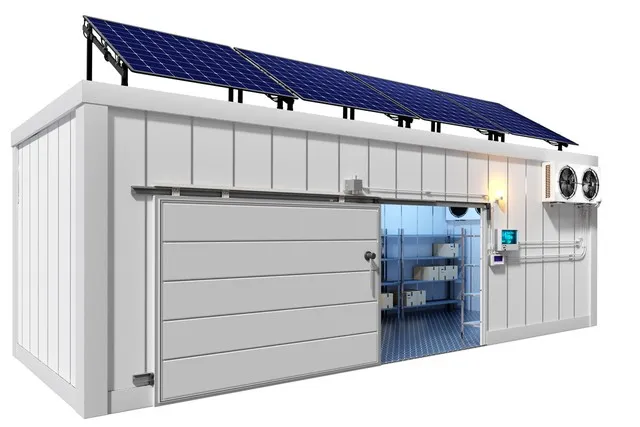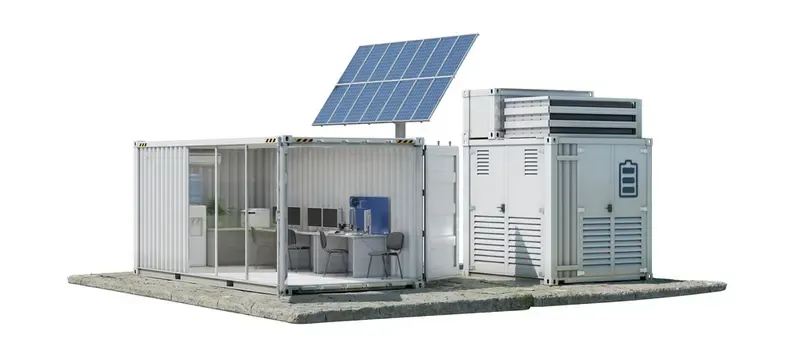Choosing a suitable solar containerized energy unit can be overwhelming—especially when you're weighing budget, location, load demands, and long-term reliability. Whether you're powering a remote building, serving as a grid backup, or preparing for going off-grid, the containerized solar setup you choose can make or destroy your project.
So what do you do?
This manual is designed to guide you through the most significant considerations to bear in mind—technically, logistically, financially—when selecting a containerized solar unit that best meets your individual energy needs.
What Is a Solar Containerized Energy Unit?
A solar containerized energy unit is a factory-assembled power station housed in a shipping container. It will typically include:
- Solar panels (fixed or foldable)
- Battery storage (typically lithium-ion or LiFePO₄)
- An inverter and charge controller
- Energy Management System (EMS)
- Wiring, safety controls, and redundant backup generators
The entire system is factory-built, so it's ideal for quick deployment in emergency or back-country use. But "plug and play" does not mean "one size fits all."
Step 1: Define Your Energy Use Case
Start with this basic but often overlooked question:
What exactly will this system charge—and how long will it power?
Here are a few common scenarios:
| Application | Daily Load Estimate | Storage Recommendation |
| Emergency shelter | 3–5 kWh | 5–10 kWh LiFePO₄ |
| Small office or clinic | 10–15 kWh | 20 kWh + backup generator |
| Construction site | 20–50 kWh | 40–80 kWh + hybrid inverter |
| Remote village microgrid | 100+ kWh | Scalable modular containers |
Getting a grasp on your peak loads, duty cycle, and schedule of use is the basis for all subsequent choices.

Step 2: Balance Solar Input vs. Battery Capacity
Systems may impress on paper—but it is where solar input equals battery capacity that performance becomes tangible.
- Solar Input (kW) dictates how quickly your batteries get charged
- Battery Storage (kWh) determines how many sunless hours you can power
A poorly sized system can cause a daily cycle on and off or inefficient generation. Your system will ideally fully charge batteries in 5–7 sun hours on perfect or less-than-stellar weather.
Tip: Look for MPPT (maximum power point tracking) controllers—they extract more useful energy than PWM controllers.
Step 3: Think About Certifications and Safety Standards
Safety is not a choice, especially for long-term or populated-area deployment.
Here are minimum certifications to guarantee:
| Component | Certification |
| Battery | UN38.3, UL1973, IEC62619 |
| Inverter | UL1741, CE, IEC62109 |
| Overall System | UL9540 (US), CE + EMC + LVD (EU) |
| Fire Safety | NFPA 855 or equivalent |
Shortcuts are taken by some suppliers—make sure you request third-party laboratory reports or test certificates.
Step 4: Container Design and Climate Readiness
Where is your unit headed?
If it's headed to the Arctic, desert, or coastal zone, your system will need to withstand:
- Cold areas: needs insulation, battery heaters, frost-resistant cables
- Hot zones: ventilation, UV protection, heat-resistant seals
- High-humidity areas: rust-proof frame, IP65+ rated enclosures, anti-condensation design
Wind zones: anchor points, reinforced frame
Inquire from suppliers whether their systems have passed IEC mechanical stress tests (wind/snow loads ≥2400/5400 Pa).
Step 5: Plan For Deployment and Mobility
Some container systems are designed to be semi-permanent, and others are tailored for rapid deployment and repositioning.
Ask yourself:
- Do I have crane points and forklift slots?
- Will the system ever be moved again?
- Is it shipped with foldable or retractable panels?
- How fast does it deploy (<2 hours)?
- Does it require trenching, grounding, or a foundation?
If you're not sure, go modular. A good solar container should be able to operate as an individual unit but expand when required.
Step 6: Look for Smart Features and Remote Monitoring
Contemporary systems are not simply "dumb boxes of power." A quality solar container features:
- EMS with load prioritization (critical vs. non-critical loads)
- Remote diagnostics using GSM/Satellite
- Real-time data dashboard
- Smart alerts for maintenance or faults
- Optional integration with diesel gensets or EV chargers
This is where high-end systems diverge from minimum: not merely output, but control.
Case Example: Two Systems, Two Outcomes
Two NGOs implemented solar containers in East Africa for clinic support.
One chose a CE-tested equipment supplier and BMS-regulated batteries.
The other chose an economy model with poor thermal management.
Result?
System A remains functional two years on and requires only remote upgrades.
System B overheated within a few months and needed to be replaced—doubling the cost.

Questions to Ask Before You Buy
Before you buy a unit, ask the supplier:
- Can I see real-world case studies or field deployments?
- How are your batteries protected from heat and over-discharge?
- What is your guarantee—on inverter, battery, and panels?
- How scaleable or modular is your system?
- Do you offer on-site or remote technical assistance?
If they are unable to give a straightforward response, close the window.

